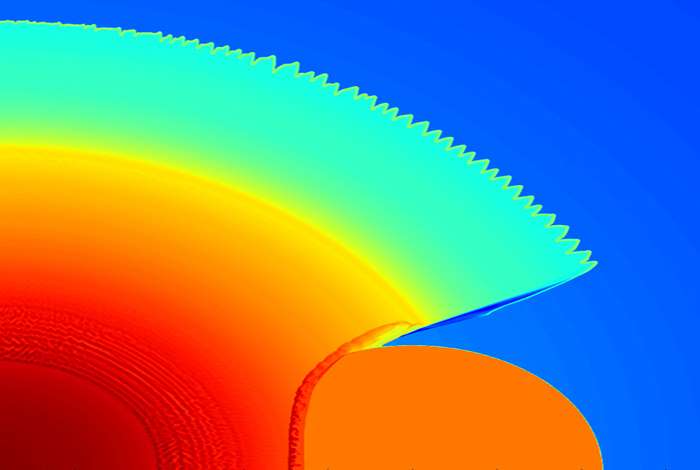Los Alamos' sky-scanning software gives insight on events of astrophysical origin

An automated software system developed at Los Alamos National Laboratory played a key role in the discovery of supernova iPTF 14atg and could provide insight, a virtual Rosetta stone, into future supernovae and their underlying physics.
"Over the past decade, rapid advances in imaging and computing technology have completely transformed time-domain astronomy," said Przemek Wozniak, the principal investigator of a Laboratory Directed Research and Development (LDRD) project that funds the Laboratory's contributions to the research. "The Intermediate Palomar Transient Factory (iPTF) is a leader among the new breed of data-intensive sky monitoring surveys that seek to discover and understand transient events of astrophysical origin."
The Laboratory is partnering with an international consortium, led by the California Institute of Technology, to conduct the iPTF project.
Type Ia supernovae, such as supernova iPTF 14atg, occur in binary systems, when two stars orbit one another and one of the stars is a dense white dwarf. This supernova demonstrated a rarely observed phenomenon that allowed scientists to understand the underlying physics of type Ia supernovae.
"The challenge in this work is to select transients from the torrent of images and quickly identify the ones that deserve further attention," Wozniak said. "Too many transients compete for scarce resources such as observing time on large telescopes. We are developing new machine learning technology that will allow us to tackle these big data challenges."
Researchers at Los Alamos developed an automated software system based on machine learning algorithms to reliably separate real astronomical transients from false detections. Wozniak said without machine learning technology, it is impossible to find events such as iPTF 14atg before it is too late for detailed follow-up observations that tell scientists about the broad spectral energy distribution of radiation emitted by supernovae.
An important piece of the puzzle in the case of iPTF 14atg came from NASA's Swift satellite, which detected the supernova in time to catch rapidly fading ultraviolet radiation from a young supernova.
"This excess UV emission is strong evidence that the supernova is interacting with its surrounding medium, such as an exploding white dwarf colliding with its companion star in the so-called single degenerate scenario," said Chris Fryer, a computational scientist at Los Alamos who leads the supernova simulation and modeling group at the Laboratory.
In this model, the ejecta from an exploding degenerate object called a white dwarf collide with a normal companion star, producing a UV transient lasting at most a few days. The competing double-degenerate model, which uses a pair of merging white dwarfs, predicts no UV excess.
Wozniak said Los Alamos is at the forefront of this fast-evolving field and well equipped to make important contributions in the future. He said the main idea is to automate and optimize the entire process of selecting, vetting and prioritizing transients in order to collect the most effective follow-up observations for events that matter.
Provided by Los Alamos National Laboratory




















